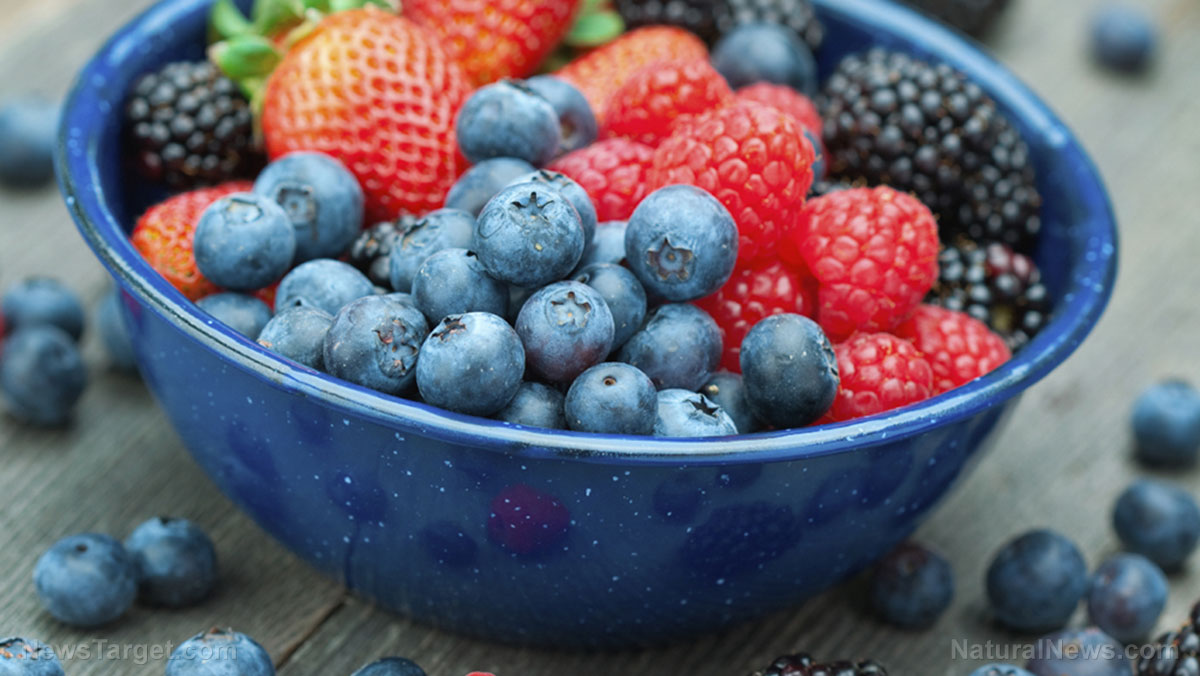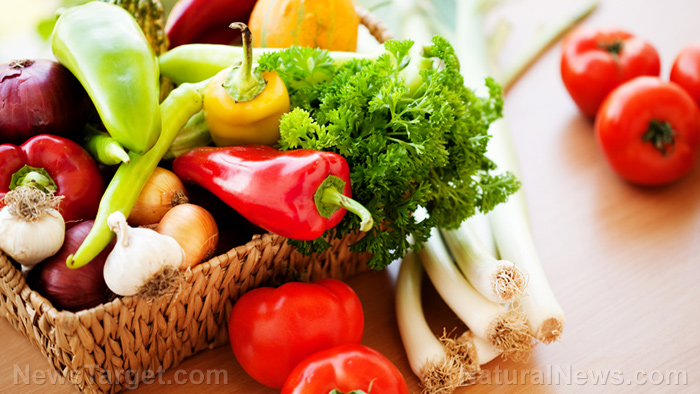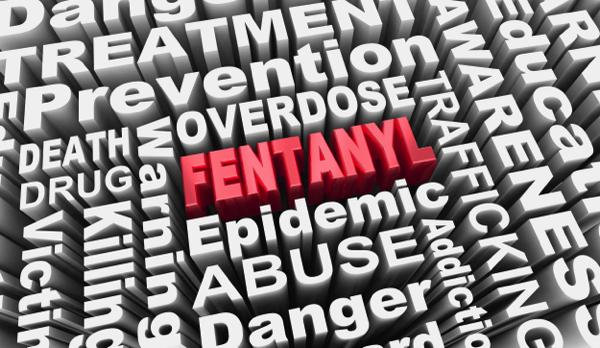 Parler
Parler Gab
Gab
- Omega-3 fatty acids, critically under consumed in the U.S., support vascular function, healthy blood pressure, and balanced triglycerides—yet mainstream medicine still pushes statins instead.
- Folate (B9) regulates homocysteine levels, a key factor in heart health, but synthetic folic acid in fortified foods is a poor substitute for bioactive 5-MTHF.
- Vitamin C’s antioxidant power combats oxidative stress and supports endothelial function, yet its heart benefits are downplayed in favor of expensive drugs.
- Resveratrol, the secret behind the "French Paradox," protects blood vessels and fights inflammation—but its bioavailability is sabotaged unless paired with absorption boosters like piperine.
- Lycopene, abundant in tomatoes, defends against LDL cholesterol and supports blood flow, yet processed food giants strip it from their products.
- Nitric oxide boosters like beetroot relax blood vessels and reduce blood pressure.
- Polyphenol-rich blueberries contain anthocyanins that improve arterial health.
1. Nitric oxide boosters (beetroot, leafy greens, spinach)
Nitrates in beets, spinach, and arugula convert into nitric oxide (NO)—a molecule so vital that its discovery earned the 1998 Nobel Prize in Medicine. NO relaxes blood vessels, reduces blood pressure, and enhances endurance. A landmark study published in Hypertension found that consuming one cup of beetroot juice daily for four weeks significantly lowered blood pressure. Athletes also benefit—research shows nitrate-rich diets improve oxygen efficiency, making beets a natural performance enhancer. This is nature’s pharmacy at work: simple, potent, and backed by science.2. Omega-3 fatty acids (wild salmon, chia seeds, walnuts)
Omega-3s (EPA and DHA) are heart-protective superstars, reducing arterial plaque, lowering triglycerides, and stabilizing heart rhythms. The Journal of the American College of Cardiology confirms that just two servings of fatty fish per week slashes heart disease risk by 30%. For plant-based options, chia seeds and walnuts offer ALA—a precursor to EPA/DHA. Omega-3s also fight systemic inflammation, a silent contributor to atherosclerosis. Supplements can help, but wild-caught salmon and sardines deliver the full spectrum of benefits without processed fillers.3. Fiber-rich foods (oats, lentils, apples)
Soluble fiber (pectin, beta-glucan) acts like a magnetic sweeper, binding to LDL cholesterol and shuttling it out of the body. Harvard research shows that 5-10g of daily fiber reduces heart attack risk by 14%. Steel-cut oats, lentils, and apples are ideal sources—their slow-digesting nature stabilizes blood sugar, preventing insulin spikes that stress the heart. Bonus? Fiber feeds gut microbiota, which produce anti-inflammatory compounds linked to vascular health.4. Dark chocolate (70%+ cocoa)
Cocoa’s flavonoids (epicatechin, quercetin) enhance endothelial function, boosting blood flow. A 2017 meta-analysis found that 20g of dark chocolate daily lowered hypertension risk by 20%. Key? Minimal processing—raw cacao retains the highest polyphenol content. Avoid milk chocolate’s sugar overload, which negates benefits. Instead, savor a square post-meal—your arteries will thank you.5. Regular aerobic exercise (brisk Walking, cycling, swimming)
150 minutes of moderate exercise weekly (Mayo Clinic guidelines) cuts heart disease mortality by 50%. Movement stimulates nitric oxide production, optimizing circulation. Cycling and swimming also strengthen cardiac output, while walking post-meal aids glucose metabolism. For those with sedentary jobs, mini-breaks (e.g., 2-minute stretches hourly) counteract stiffness. Consistency beats intensity—a 30-minute daily walk outperforms weekend warrior extremes.6. Magnesium-rich foods (pumpkin seeds, almonds, dark leafy greens)
Magnesium moderates blood pressure, prevents arrhythmias, and relaxes vascular smooth muscle. A Nutrients journal meta-analysis revealed that low magnesium intake hikes CVD risk by 54%. Yet 50% of adults are deficient. Pumpkin seeds (156mg per ounce) and spinach (157mg per cup) are quick fixes. Pair with vitamin D (enhances absorption) and limit caffeine/alcohol, which deplete reserves.7. Stress reduction (meditation, yoga, forest bathing)
Chronic stress inflames arteries and spikes cortisol, accelerating plaque formation. Studies show meditators have 48% lower stroke risk (Stroke Journal). Yoga’s deep breathing stimulates the vagus nerve, slowing heart rate. Shinrin-yoku (forest bathing)—10 minutes among trees—cuts stress hormones by 15%. Even 5-minute desk meditations reset your fight-or-flight response, shielding your heart.8. Garlic (allicin)
Garlic’s allicin breaks down into sulfur compounds that reduce arterial stiffness. Trials show 600–1,200mg aged garlic extract daily lowers BP as effectively as drugs. For fresh cloves, crush and wait 10 minutes (activates enzymes). Roasted garlic loses potency—raw is superior. Pair with ginger for synergistic circulation benefits.9. Sleep (7-9 hours nightly)
Poor sleep increases CRP (inflammation marker) and disrupts autonomic balance, straining the heart. Deep sleep triggers growth hormone release, repairing vascular tissue. For restless minds, magnesium glycinate or tart cherry juice (natural melatonin) can help. Blue light blockers post-8pm also preserve circadian rhythm.10. Polyphenol-rich berries (blueberries, strawberries)
Blueberries, whether fresh or frozen, are nutritional powerhouses with multiple mechanisms that support heart health. Here’s a detailed breakdown of their benefits:- Oxidative stress, driven by free radicals, contributes to atherosclerosis (hardening/narrowing of arteries) by damaging the endothelium (inner artery lining).
- Blueberries contain anthocyanins, potent antioxidants that scavenge free radicals, preventing oxidative damage to LDL cholesterol and arterial walls.
- Studies show that regular berry consumption reduces markers of oxidative stress, lowering risks of plaque rupture and clot formation.
- Anthocyanins in blueberries enhance nitric oxide (NO) production, promoting vasodilation (relaxation of blood vessels). This leads to improved arterial elasticity, reducing resistance in blood flow and lowering blood pressure—a key factor in preventing hypertension-related heart strain.
- Frozen blueberries retain maximum anthocyanins due to flash-freezing immediately after harvest, often surpassing nutrient levels in out-of-season fresh berries.
- Pterostilbene (a compound related to resveratrol in blueberries) helps lower oxidized LDL cholesterol, a major driver of atherosclerosis.
- Blueberries also inhibit foam cell formation (fat-laden immune cells that contribute to arterial plaque). Blueberries provide ~3.6g of fiber per cup, aiding bile acid excretion in the gut—forcing the liver to use cholesterol reserves, thereby reducing circulating LDL.
Governments continue to obscure COVID-19 vaccine data amid rising concerns over excess deaths
By patricklewis // Share
Tech giant Microsoft backs EXTINCTION with its support of carbon capture programs
By ramontomeydw // Share
Germany to resume arms exports to Israel despite repeated ceasefire violations
By isabelle // Share










